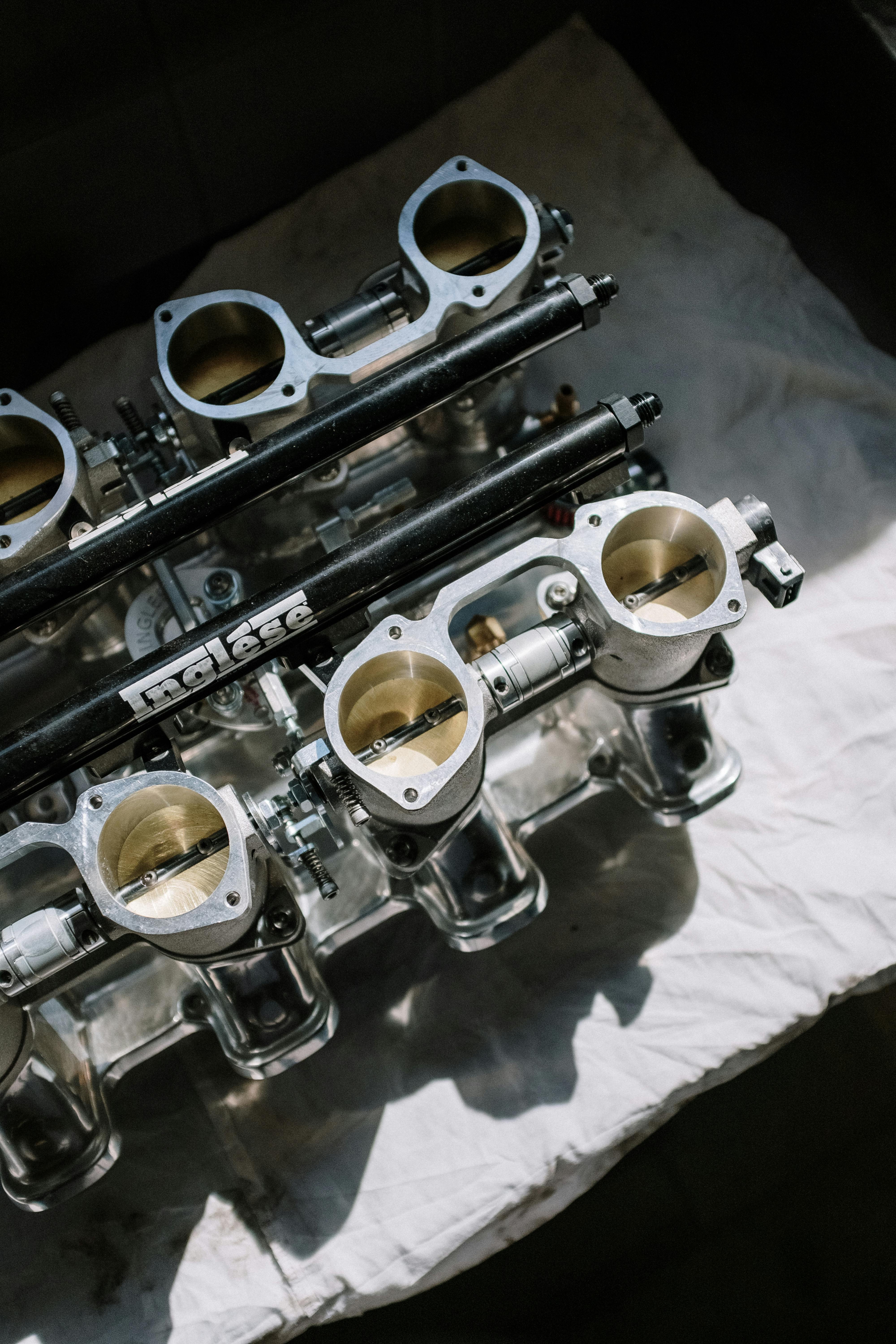Are you tired of experiencing frustrating lag in Windows 11? You’re not alone! Many users encounter driver-induced lag that can turn even the simplest tasks into a test of patience. In this article, we will explore effective solutions to fix this issue and enhance your PC’s performance. Whether you’re gaming, streaming, or just browsing, resolving these pesky driver problems can make a significant difference.
Windows 11 driver lag can stem from outdated or incompatible drivers that hinder your system’s ability to perform at its best. But don’t worry! We’ve got you covered with simple yet powerful strategies to tackle this issue head-on. From updating drivers to adjusting settings, these solutions are designed to help you reclaim that smooth experience you once had. Have you ever wondered how a simple update can change your entire computing experience? By the end of this guide, you’ll not only understand the underlying causes of driver-induced lag but also have the tools at your disposal to fix it quickly and efficiently.
So, let’s dive right in! By implementing our tested methods, you can wave goodbye to annoying lags and say hello to a faster, more responsive Windows 11. Are you ready to transform your user experience and boost your productivity? Keep reading to discover the secrets behind resolving Windows 11 driver issues and enjoy a seamless computing journey!
Uncover the 7 Common Driver Issues Causing Windows 11 Lag and How to Fix Them Fast

Are you tired of your Windows 11 lagging, especially when you need it the most? Many folks in New York and beyond experiencing this frustrating issue often find that the culprit lies within their drivers. Drivers are essential pieces of software that allow your operating system to communicate with your hardware. When they’re not working right, it can lead to performance problems. In this article, we uncover the 7 common driver issues causing Windows 11 lag and how to fix them fast.
1. Outdated Drivers
One of the most common issues is outdated drivers. Windows 11, being a new operating system, often requires the latest drivers for optimal performance. If your drivers are out of date, it can cause your system to lag significantly. Always check for updates regularly.
- How to fix:
- Go to Device Manager.
- Right-click on the device you want to update.
- Select “Update Driver.”
2. Incompatible Drivers
Sometimes, drivers aren’t compatible with Windows 11. If you’ve upgraded from a previous version, some drivers may not work properly. This can lead to instability and lagging issues.
- How to fix:
- Visit the hardware manufacturer’s website.
- Download the appropriate driver that’s compatible with Windows 11.
3. Corrupted Drivers
Corrupted drivers can also lead to performance issues. They can get corrupted during updates or due to malware. If your Windows 11 is lagging, corrupted drivers might be the hidden problem.
- How to fix:
- Use the Device Manager to uninstall the corrupted driver.
- Restart your computer, and Windows should automatically reinstall it.
4. Missing Drivers
Missing drivers can occur if the operating system fails to detect certain hardware. This can lead to system lag, especially if critical components don’t have the necessary drivers installed.
- How to fix:
- Check Device Manager for any devices with exclamation marks.
- Install the missing drivers from the manufacturer’s site.
5. Conflicting Drivers
Driver conflicts can happen when two drivers are trying to control the same device. This can cause a slowdown and various errors in Windows 11.
- How to fix:
- Identify the conflicting drivers in Device Manager.
- Uninstall one of the conflicting drivers.
6. Overloaded Drivers
Sometimes, your drivers may be simply overloaded. Too many background processes can lead to lagging because the system is overwhelmed.
- How to fix:
- Use Task Manager to check for processes that use excessive resources.
- Disable or uninstall unnecessary applications.
7. Incorrect Driver Settings
Improper settings of the drivers can also lead to performance issues. If the settings are not configured correctly, lag can occur quite easily.
- How to fix:
- Access the driver properties through Device Manager.
- Adjust the settings according to the manufacturer’s recommendations.
In summary, fixing Windows 11 driver-induced lag is often just a matter of finding the right solution for the issue. Whether it’s updating, uninstalling, or adjusting settings, these common problems are manageable. Make sure to keep your drivers updated and monitor their performance. By taking these steps, you can ensure that your Windows 11 experience is as smooth as possible. Remember, don’t let lag hold you back; tackle those driver issues head-on, and enjoy a faster, more efficient system today!
Step-by-Step Guide: How to Resolve Driver-Induced Lag in Windows 11 in Under 15 Minutes

If you’re running Windows 11 and notice your system lagging, chances are, it could be due to driver issues. Driver-induced lag is a common problem that can frustrate users and slow down their productivity. Thankfully, with a few simple steps, you can fix this issue in under 15 minutes. Here’s a step-by-step guide to get your system back up to speed.
Understanding Driver-Induced Lag
Driver-induced lag happens when the software that communicates between your operating system and hardware isn’t functioning properly. Sometimes, outdated drivers, incompatible drivers, or even corrupted files can cause your system to lag. It’s important to regularly check your drivers to ensure everything is up to date and working fine.
Signs of Driver-Induced Lag
You might be wondering how to tell if your lag is driver-related. Here are some common signs:
- Slow boot times: If your computer takes longer than usual to start up, it might be due to driver issues.
- Frequent freezes or crashes: These can indicate that a driver is not responding well.
- Poor performance in games or applications: If high-performance apps are lagging, check your drivers.
- Device manager error messages: Error codes in Device Manager can point directly to driver problems.
Quick Steps to Fix Windows 11 Driver-Induced Lag
Follow these steps to resolve driver-induced lag quickly:
-
Check for Windows Updates
- Go to Settings > Update & Security > Windows Update.
- Click on Check for updates and install any available updates. Sometimes, updates include driver fixes.
-
Update Drivers Manually
- Right-click on the Start button and select Device Manager.
- Expand the categories and right-click on the device you suspect is causing the lag.
- Select Update driver and choose Search automatically for updated driver software.
- Follow the prompts to install any available updates.
-
Uninstall Problematic Drivers
- Still in Device Manager, right-click the lagging device and select Uninstall device.
- Restart your PC. Windows will automatically attempt to reinstall the driver.
-
Use the Troubleshooter
- Go to Settings > Update & Security > Troubleshoot > Additional troubleshooters.
- Run the Hardware and Devices troubleshooter to see if it can identify and fix any driver issues.
-
Reinstall Drivers from Manufacturer’s Website
- If the above steps don’t work, visit the manufacturer’s website of your hardware.
- Download the latest driver for your specific model and install it.
-
Roll Back Drivers
- If the lag started after a driver update, you can roll back to the previous version.
- In Device Manager, right-click the device and select Properties.
- Go to the Driver tab and click on Roll Back Driver if the option is available.
Additional Tips
- Always create a system restore point before making changes to your drivers. This way, you can revert back if anything goes wrong.
- Regularly check your device for updates, at least once a month, to avoid future issues.
- Consider using third-party software to manage drivers if you feel overwhelmed by the process.
Lagging issues can be annoying, but by following these steps, you can quickly fix Windows 11 driver-induced lag. Make sure to keep your drivers updated and regularly check your system for any issues. With a little bit of effort, you can enjoy a smoother computing experience.
Top 5 Tools to Diagnose and Fix Windows 11 Driver Problems for Smooth Performance

In the fast-paced world of technology, Windows 11 has made waves with its sleek interface and new features. But, as with any operating system, it’s not immune to issues, particularly when it comes to drivers. If you experience lagging or performance hiccups, it’s often due to outdated or malfunctioning drivers. But fret not! We’ve compiled a list of the top 5 tools to diagnose and fix Windows 11 driver problems, ensuring smooth performance on your device.
1. Device Manager
This built-in utility is often overlooked. It allows you to manage hardware and their drivers. If you notice a device not working right, just open Device Manager. It displays all your devices, and any that have problems will have a yellow triangle icon next to them.
- Right-click on the problematic device.
- Select “Update driver” to let Windows search automatically.
- You can also choose to uninstall and then reinstall the driver.
2. Driver Booster
Driver Booster is a popular third-party tool that simplifies the process of updating outdated drivers. It scans your system for outdated drivers and provides a one-click solution to update them. This tool can save you time and hassle.
- It supports a large database of drivers.
- You can schedule scans for regular maintenance.
- It creates restore points before making changes, which is very important.
3. Windows Update
Windows Update does more than just update the operating system; it also offers new drivers for hardware. Sometimes manufacturers push updates through Windows Update, so keeping your system updated can fix lag issues.
- Go to Settings > Update & Security > Windows Update.
- Click on “Check for updates” to see if there are any available.
- Installing these updates could resolve driver issues.
4. System File Checker (SFC)
Sometimes, the cause of driver issues is corrupted system files. The System File Checker tool is built into Windows 11 and can repair corrupted files. Running this might resolve your driver-induced lag.
- Open Command Prompt as an administrator.
- Type “sfc /scannow” and press Enter.
- Wait for the scan to complete and follow any instructions provided.
5. Driver Easy
Driver Easy is another third-party solution, and it’s user-friendly. It scans your computer for outdated drivers and allows you to download and install them easily. Unlike Driver Booster, it offers a free version with necessary features.
- It helps find rare drivers that may not be easily available.
- You can backup drivers before updating, which is very useful.
- The interface is intuitive and straightforward.
With these tools, you can easily identify and fix driver-related issues on Windows 11. It’s important to remember that keeping your drivers up-to-date can significantly enhance system performance. Regular checks can prevent future lag and ensure your computer runs smoothly.
Don’t let driver issues hold you back. Embrace these tools and take control of your Windows 11 performance. Whether you choose to use built-in features or third-party solutions, there’s always a way to fix Windows 11 driver-induced lag. Stay proactive, keep your drivers in check, and enjoy a seamless computing experience!
Is Your Windows 11 Sluggish? Discover 10 Essential Tips to Eliminate Lag Caused by Drivers

Is your Windows 11 sluggish? You’re not alone. Many users are finding their systems lagging unexpectedly. This can often be traced back to driver issues. Drivers are essential for your operating system to communicate effectively with your hardware, and if they are outdated or corrupted, they can cause significant slowdowns. Here, we’ll explore 10 essential tips to eliminate lag caused by drivers, helping you to fix Windows 11 driver-induced lag with these simple solutions.
1. Update Your Drivers Regularly
Keeping your drivers updated is crucial. Manufacturers release updates that fix bugs and improve performance. You can check for driver updates in the Device Manager. Right-click on the Start menu, select Device Manager, and then look for any devices with a yellow triangle. Right-click and select “Update Driver”.
2. Roll Back Drivers If Problems Occur
Sometimes newer drivers can cause problems. If you notice lag after a recent update, consider rolling back the driver. In Device Manager, right-click the device, select Properties, then go to the Driver tab and click “Roll Back Driver”.
3. Use Windows Update
Windows 11 includes an update feature that often includes driver updates. Go to Settings > Windows Update and click on “Check for updates”. This can often resolve driver-related issues automatically.
4. Uninstall Unused Drivers
If you have hardware that you no longer use, consider uninstalling its drivers. For example, if you had an old printer or graphics card, its driver might still be on your system, causing conflicts. In Device Manager, right-click on the device and choose “Uninstall device”.
5. Adjust Your Power Settings
Windows 11 has various power settings that can affect performance. Go to Settings > System > Power & battery. Set your power mode to “Best performance” to ensure your hardware runs optimally.
6. Disable Background Applications
Background apps can use resources and slow down your system. You can manage these in Task Manager. Right-click on the taskbar, select Task Manager, and under the Startup tab, disable any unnecessary applications.
7. Clean Up Your Disk
A cluttered hard drive can also lead to sluggishness. Use the Disk Cleanup utility by searching it in the Start menu. Select the drive you want to clean, and it will offer options to free up space, which can help improve performance.
8. Check for Malware
Malware can significantly slow down your computer. Use Windows Defender or a reliable third-party antivirus to scan your system regularly. Make sure your antivirus software is up-to-date to catch the latest threats.
9. Optimize Your Startup Programs
Having too many programs start when Windows boots can slow down your system. You can optimize these in Task Manager under the Startup tab. Disable programs you rarely use. This can make a noticeable difference in boot times and overall performance.
10. Reinstall Drivers if Necessary
If all else fails, you might need to reinstall drivers. Go to Device Manager, right-click on the problematic device, and select “Uninstall”. Restart your computer, and Windows should automatically reinstall the driver.
Fixing Windows 11 driver-induced lag can be straightforward if you follow these steps. Regular maintenance and updates are key. By applying these tips, you can enjoy a smoother, faster computing experience. Don’t let driver issues slow you down; take control of your system’s performance today!
Why Updating Your Drivers Could be the Key to Boosting Windows 11 Performance: A Complete Overview

Are you tired of your Windows 11 computer lagging when you are trying to get things done? You may have looked into many fixes, but one of the most crucial things you might overlook is updating your drivers. In this article, we will dive into why updating your drivers could be the key to boosting your Windows 11 performance. Plus, we’ll give you some simple solutions to fix Windows 11 driver-induced lag.
The Importance of Drivers in Windows 11
Drivers are essential pieces of software that allows your operating system to communicate with hardware components like graphics cards, sound cards, and network adapters. When you running an outdated or incompatible driver, it can cause all sorts of problems. This includes lagging, crashing, and even system errors. It’s like trying to drive a car with old tires; you might make it a distance, but the ride won’t be smooth.
Signs Your Drivers Need Updating
If you are experiencing any of these issues, it maybe time to check your drivers:
- Frequent crashes or blue screen of death (BSOD)
- Slow performance in games or applications
- Hardware not being recognized by Windows
- Network connectivity problems
- Audio or video playback issues
How to Update Your Drivers on Windows 11
Updating drivers is not as complicated as it sounds. Here’s a simple step-by-step process to help you do it:
- Open Device Manager: Right-click on the Start button and select Device Manager from the list.
- Find the Device: Expand the category of the device you want to update. For example, if you’re having issues with your graphics, look under “Display adapters.”
- Update Driver: Right-click on the specific device and select “Update driver.” Choose “Search automatically for updated driver software.”
- Follow Prompts: Windows will search for any available updates and follow the prompts to install them. You may need to restart your computer.
Fix Windows 11 Driver-Induced Lag With These Simple Solutions
If you find that updating your drivers doesn’t completely fix the lag, don’t worry. Here are some additional strategies:
- Roll Back Drivers: If a recent update caused issues, you can roll back to the previous version. In Device Manager, right-click the device, select Properties, go to the Driver tab, and click “Roll Back Driver.”
- Uninstall and Reinstall Drivers: Sometimes, the driver might be corrupted. In Device Manager, you can uninstall the driver and then restart your computer. Windows will automatically reinstall it.
- Use Driver Update Software: There are many third-party tools that can help you manage and update your drivers automatically. Just make sure to choose a reputable one.
- Check Windows Update: Sometimes, Microsoft releases updates that include new drivers. Go to Settings > Update & Security > Windows Update and check for updates.
Why Regular Driver Maintenance Matters
Keeping your drivers updated is not just a one-time thing. Regular checks can help prevent issues before they start. Plus, manufacturers often release updates to improve performance and fix bugs, so you don’t want to miss out on those benefits. A well-maintained driver can mean smoother gameplay, faster file transfers, and an overall better user experience.
Driver updates might seem tedious, but they can make a world of difference. By understanding the impact of driver maintenance, you can significantly enhance your Windows 11 experience. Remember, a little effort in keeping your drivers in check can save you from future headaches.
Conclusion
In conclusion, addressing driver-induced lag in Windows 11 is crucial for optimizing your PC’s performance and ensuring a smooth user experience. By regularly updating your drivers, utilizing Device Manager, and considering dedicated driver update software, you can effectively minimize lag caused by outdated or incompatible drivers. Additionally, performing system checks and leveraging troubleshooting tools can help identify underlying issues that might contribute to performance degradation. It’s essential to remain proactive in maintaining your system’s health, as this not only enhances performance but also prolongs the life of your hardware. If you encounter persistent lag despite these efforts, don’t hesitate to seek professional assistance. Remember, a well-optimized system is key to unlocking the full potential of Windows 11. Take action today to enhance your computing experience and enjoy the seamless performance you deserve!

